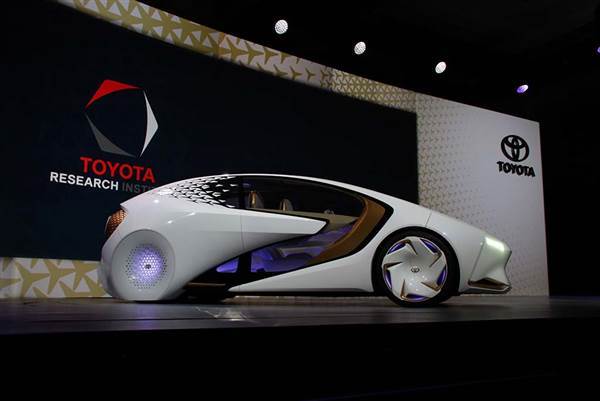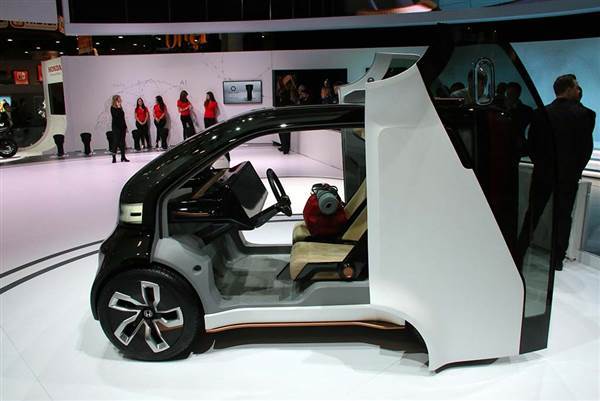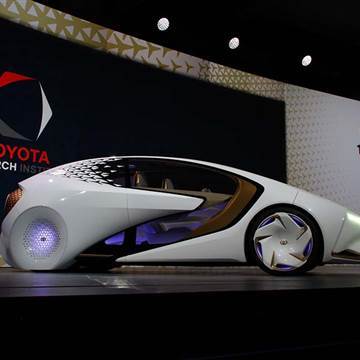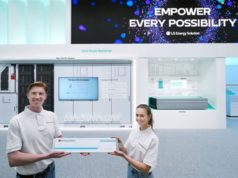Marking its 50th anniversary this year, CES has traditionally focused on things like televisions, smartphones, computers and, in recent years, drones. But those are almost afterthoughts at the 2017 event, as high-tech cars take center stage.
“The lines that once separated automakers from technology firms has blurred,” said Mike O’Brien, head of product planning for Hyundai Motor America.
Related: Alexa Is the Magic Word at CES
That’s obvious in a variety of ways. Consider the virtual assistants that have become one of the year’s hot technologies. Amazon, for example, reports it saw a nine-fold year-over-year increase in sales of its Echo device. But Echo’s friendly voice, known as Alexa, will soon go mobile, integrated into cars, trucks and crossovers equipped with Ford’s Sync infotainment system.
“Ford and Amazon are aligned around a vision that your voice should be the primary way to interface with your favorite devices and services,” said Don Butler, executive director, Ford Connected Vehicle and Services. “Customers will be able to start their vehicles from home, and manage smart home features while on the road — making life easier.”
Virtual Assistants in the Passenger Seat
Tomorrow’s cars are going to be computers on wheels, with countless microprocessors, digital displays and other technologies handling safety, powertrain and infotainment systems. But getting a handle on it all can be a bit overwhelming. Toyota and Honda showed off concept vehicles in Las Vegas that go beyond the basic functions of current digital assistants.


“We recognize that the important question isn’t whether future vehicles will be equipped with automated or connected technologies,” said Bob Carter, senior vice president of automotive operations for Toyota. “It is the experience of the people who engage with those vehicles.”
Toyota’s Concept-i prototype is designed to use artificial intelligence, among other things, to see whether a driver is tired or distracted. If so, it can subtly begin to assist in driving, perhaps by helping keep a vehicle in its lane or applying the brakes when traffic slows.
The Honda NeuV — short for New Urban Electric Vehicle — adds an “emotion engine” to read a driver’s emotions. Feeling a bit of road rage? It will adjust the vehicle’s lighting, and switch to more soothing music.
The NeuV — pronounced noo-VEE — also could help an owner make money. The concept vehicle can operate entirely without a driver and so, while its owner might be at work, it could roam the streets working for a ride-sharing service like Uber or Lyft.


Autonomous vehicles and electric propulsion are the two hottest topics at CES this year, Takao Asami, the head of advanced engineering at Nissan, asserting that they have reached a “tipping point.”
Electric Sales Aren’t Quite Electric Yet
While sales of electric vehicles have been slower than many proponents had hoped, demand is beginning to swell as automakers drop prices, improve range and increase performance.
California-based start-up Faraday Future clearly demonstrated what the battery-car of the future might be capable of when it unveiled its first production model on Tuesday. The 1,050 horsepower FF91 — which it promises to start building in 2018 — not only can deliver more than 300 miles per charge but launch from 0 to 60 in a neck-snapping 2.4 seconds, quicker than the fastest Ferrari on the road.
Related: Faster Than a Ferrari, And It Runs on a Battery
Like the Honda NeuV, the FF91 incorporates autonomous driving capabilities demonstrated when an empty version of the electric utility vehicle found a parking spot in the lot outside the auditorium where it was being introduced. But, a few minutes later, the FF91 balked when Faraday officials tried to get it to roll onto the stage.
While practically every single major automaker — as well as start-ups like Faraday and Tesla — is promising to get autonomous technology onto the road in the near future, some experts are sounding notes of caution.
Though advanced driver-assistance technologies are already in production, cars that can drive autonomously under all circumstance, and even without a driver, may be “a wonderful goal (but) none of us are even close,” cautioned Gill Pratt, the head of the new Toyota Research Institute. That’s the automaker’s $1 billion unit created last year to work on autonomous vehicles, AI and robotics.
Reducing Human Error
On the positive side, experts contend that autonomous vehicles could eventually lead to a major drop in crashes, injuries and highway fatalities — the number of deaths rising to more than 34,000 on U.S. roads last year. But while human error is blamed for 90 percent of all crashes, “computers still have a hard time operating as efficiently as the human brain,” said Pratt.
As a result, most of the autonomous systems now in development anticipate that human “operators” will have to remain behind the wheel, ready to take control — sometimes with only a second or two warning — if something goes wrong.
That could be a system failure, or simply a situation that an AI-controlled car won’t know how to handle. That might be something as simple as a construction site requiring the car to cross the yellow line it was programmed always to obey, said Maarten Sierhuis, the head of autonomous development at Nissan.
That maker thinks it has a solution that Sierhuis told his CES audience “could get autonomous technology on the road not just years, but decades sooner” than might otherwise be possible. If a vehicle runs into a situation it can’t handle it will automatically connect to a control center where a human driver will quickly analyze the situation using data from the car’s cameras, laser and radar sensors, and program in a solution.
With that solution, Nissan CEO Carlos Ghosn promised to have the company’s first autonomous vehicle on sale around 2020. That is, for now, a target date many of Nissan’s competitors are shooting for.
And it means that cars, especially autonomous electric vehicles, will likely remain a fixture at CES for the foreseeable future.







